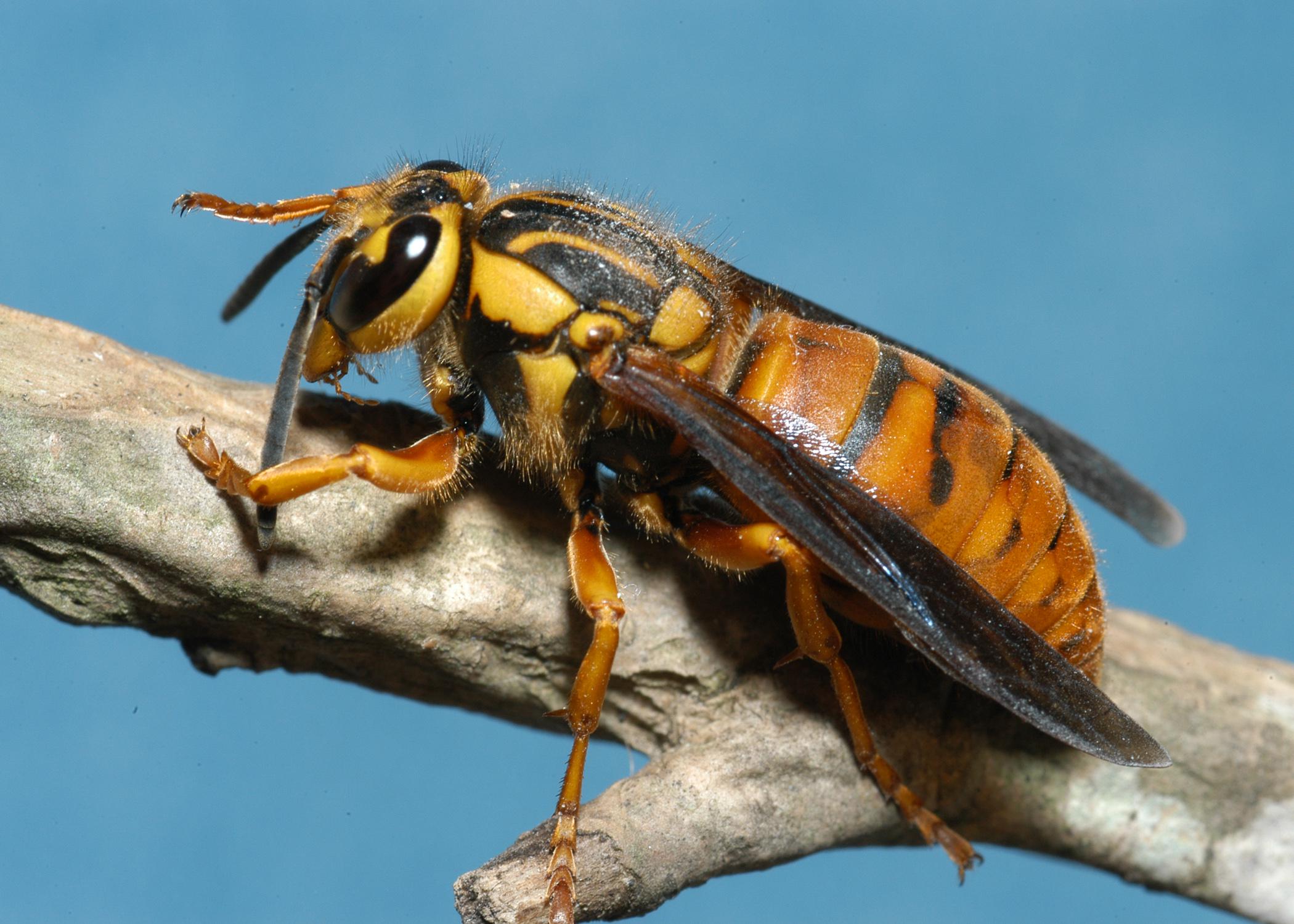Information Possibly Outdated
The information presented on this page was originally released on May 7, 2020. It may not be outdated, but please search our site for more current information. If you plan to quote or reference this information in a publication, please check with the Extension specialist or author before proceeding.
MSU experts: no Asian hornets in Mississippi
RAYMOND, Miss. -- News reports of a new, invasive hornet spotted in the Northwest has heightened people’s awareness of flying insects recently.
The Asian giant hornet, also called a murder hornet, has been confirmed in the state of Washington.
Mississippians likely will not see the aggressive species for some time, if at all, said Mississippi State University Extension Service entomologist Blake Layton. However, some people believe they have already seen the Asian hornet here.
“I had a call on Monday morning from a lady in Alabama who was pretty sure they’d killed an Asian hornet at her house over the weekend,” Layton said. “They killed it after it lit on her daughter’s shoulder, and they sent me a photo. It turned out to be a periodic cicada.”
Periodic cicadas are one of four insects found in Mississippi that can be confused with the Asian giant hornet, Layton said. European hornets, cicada killers and Southern yellowjacket queens also are similar in appearance to this pest.
Asian giant hornets can be more than 2 inches long. They have large, orange heads with big mandibles used to kill their prey, which include honey bees. Their bodies are black with orange stripes, and they have large, clear wings. Their long stingers can inject potent venom that sometimes causes severe allergic reactions and possibly death in humans and large animals.
A few Asian hornets can wipe out a colony of bees in a matter of hours.
While periodic cicadas do not have the same body shape as Asian giant hornets, people can confuse them with the invasive pest. Both are large with orange and black bodies and large, clear wings, and they both make a buzzing sound in flight. There are several different broods, or species groups, of periodic cidadas that occur intermittently in the East and Midwest. Three broods appear occasionally in Mississippi.
“This is not an emergence year for any of the three broods that we have in Mississippi,” Layton said. “But occasionally, there is one that shows up for the party on the wrong year.”
Like Asian giant hornets, European hornets are true hornets and are nonnative. Workers are about 1 inch long and queens are even larger. They are found mostly in north Mississippi. While they are uncommon, these hornets are spreading across the state. They also eat honey bees and can be minor pests in apiaries, Layton said.
They can be aggressive toward humans who get too close to their nests.
Cicada killers are actually wasps more closely related to mud daubers. But one could be mistaken for an Asian hornet because of its sheer size and similar coloring.
“A big, female killer is just as big as an Asian hornet,” Layton said. “These wasps can catch a cicada and fly off with it.”
Cicada killers occur statewide but usually go undetected because of their social habits. They nest alone and rarely sting because they are not aggressive and do not defend their nests.
Southern yellowjacket queens also look a lot like Asian giant hornets with their large, orange and black bodies. The queens are much larger than the workers and are sometimes spotted in the spring as they search for places to build their nests. They nest below ground in groups that can include hundreds to thousands of yellowjackets. They will aggressively defend the nest when disturbed.
Homeowners usually get stung when doing yardwork, such as mowing or trimming, that causes vibration of the nest.
Although these established species of hornets, wasps and bees can be nuisances to humans, they play important roles in the ecosystem. They feed on caterpillar larvae and other insect pests, providing some natural control. Bees pollinate plants as they collect nectar.
Layton recommends using control methods only when nests are near areas where humans might get stung.
Asian giant hornets are not pests that Mississippi beekeepers or anyone in the Southeast should be overly concerned about right now, said Jeff Harris, MSU Extension bee specialist.
“There is no evidence that we have high numbers of this pest or that they have established colonies in the U.S.,” Harris said.
Harris said varroa mites are the primary threat to bee populations right now. However, he, his colleagues and beekeepers worldwide are always on the lookout for emerging threats.
“We’ll definitely keep an eye on what develops with the Asian giant hornet. If it becomes established in the U.S., it could be devastating to bee populations,” he said. “But I think there are other, more concerning emerging pests and viruses that need to be higher on our watch lists right now.”
For more information on bees, wasps and other insects and how to control them, refer to Extension Publication 2331, “Control of Insect Pests In and Around the Home Lawn.”
For more information on honey bees and beekeeping, visit the beekeeping page on the MSU Extension web site.




